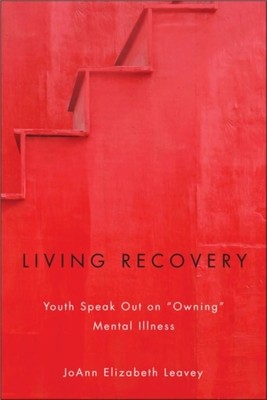
- We will send in 10–14 business days.
- Author: Joann Elizabeth Leavey
- Publisher: Wilfrid Laurier University Press
- Year: 2015
- Pages: 165
- ISBN-10: 1554589177
- ISBN-13: 9781554589173
- Format: 15 x 22.4 x 1.5 cm, minkšti viršeliai
- Language: English
- SAVE -10% with code: EXTRA
Reviews
Description
Living Recovery provides critical information for practitioners and educators in mental health services about the self-described needs of young people diagnosed with mental illness. It portrays the stages of living with mental illness through the recovery model ELARâ "emergence, loss, adaptation, and recovery. The author interviewed youth aged sixteen to twenty-seven in Canada, Australia, and the US, and her book relates the price of the stigma surrounding mental illness, especially for young people who are already challenged with the developmental tasks of adolescence. The text examines the youth-described â oesocial illnessâ of stigma and the resulting self-marginalization they say is necessary to survive stigma and social isolation. When youth feel isolated, ignored, or shunned, the resulting shame and stress they may feel has the potential to exacerbate such illnesses as obsessive compulsive disorder, psychosis, anxiety, and/or various mood disorders.
The findings from this research anticipate and identify interventions that are useful for youth with mental illness. If programs and systems of care take into account youth stories such as those presented here, interventions will become more meaningful and more likely to address problems related to social and emotional distresses.
In charting journeys through the emergence of illness, to loss, adaptation, and recovery, the book reports on how mental illness disrupted these youthsâ (TM) lives on every level, especially in the transition from late adolescence to young adulthood. But youth also describe ways in which they adapted and recovered and how they came to â oeown the illnessâ with a greater sense of agency and self-direction.
EXTRA 10 % discount with code: EXTRA
The promotion ends in 21d.18:39:59
The discount code is valid when purchasing from 10 €. Discounts do not stack.
- Author: Joann Elizabeth Leavey
- Publisher: Wilfrid Laurier University Press
- Year: 2015
- Pages: 165
- ISBN-10: 1554589177
- ISBN-13: 9781554589173
- Format: 15 x 22.4 x 1.5 cm, minkšti viršeliai
- Language: English English
Living Recovery provides critical information for practitioners and educators in mental health services about the self-described needs of young people diagnosed with mental illness. It portrays the stages of living with mental illness through the recovery model ELARâ "emergence, loss, adaptation, and recovery. The author interviewed youth aged sixteen to twenty-seven in Canada, Australia, and the US, and her book relates the price of the stigma surrounding mental illness, especially for young people who are already challenged with the developmental tasks of adolescence. The text examines the youth-described â oesocial illnessâ of stigma and the resulting self-marginalization they say is necessary to survive stigma and social isolation. When youth feel isolated, ignored, or shunned, the resulting shame and stress they may feel has the potential to exacerbate such illnesses as obsessive compulsive disorder, psychosis, anxiety, and/or various mood disorders.
The findings from this research anticipate and identify interventions that are useful for youth with mental illness. If programs and systems of care take into account youth stories such as those presented here, interventions will become more meaningful and more likely to address problems related to social and emotional distresses.
In charting journeys through the emergence of illness, to loss, adaptation, and recovery, the book reports on how mental illness disrupted these youthsâ (TM) lives on every level, especially in the transition from late adolescence to young adulthood. But youth also describe ways in which they adapted and recovered and how they came to â oeown the illnessâ with a greater sense of agency and self-direction.


Reviews